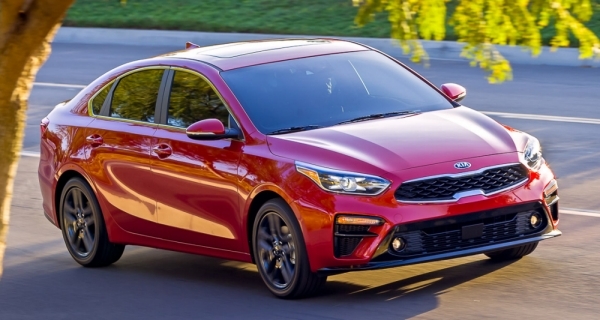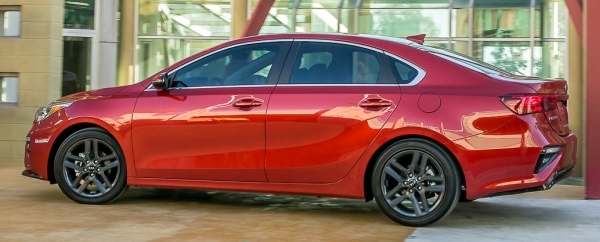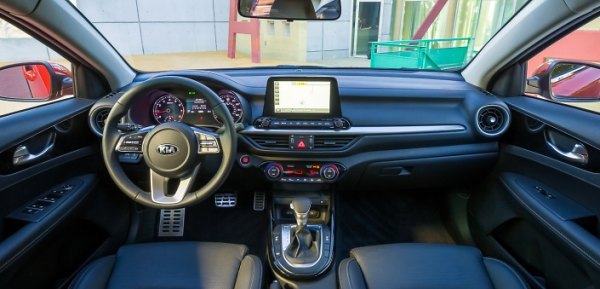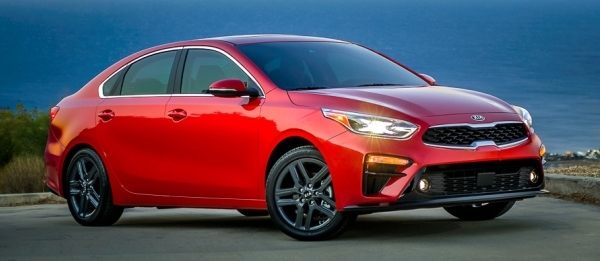Published
on 3
Oct 2018
|
All rights reserved.
|
|
|

|
|
Good
looks and upmarket feel should win more fans...
|
|
It is incredible
that Hyundai-Kia group offers as many as 4 cars in the compact family
car class, or what we call the C-segment. And these do not include
crossovers and niche models like Veloster. Why does it need so many?
Firstly, to feed both brands, each with 2 cars. They mirror each other
mechanically thus the additional development cost is rather limited.
Secondly,
to suit the taste of different markets. In Europe where streets are
narrower and motorists are more demanding on chassis dynamics and build
quality,
it offers i30 and Ceed, both are hatchbacks with Volkswagen-like
packaging, and both ride on expensive multi-link rear axle. For the
rest of the world, especially the most important USA and China, it
offers simpler but larger sedans in the form of Elantra and Forte. By
the way, Forte is the marketing name for North America. It is called K3
and Cerato instead in Korea and the rest of the world, respectively.
The Forte and Elantra are mechanically the same, riding on the same
platform, sharing the same 2700mm wheelbase (i.e. 50mm longer than
their
European cousins), twist-team rear axle, the same range of engines and
transmissions. However, the packaging is so different that you will
never trace out their link. Among the two, the Kia is more stylish.
This is especially true to the latest generation, which looks really
upmarket. In my opinion, this shape should have been adopted by
Volkswagen for Jetta. Wolfsburg should have replaced the niche Jetta
Mk5 with this design, not the underwhelming, widely criticized Mk6.
Somehow, the Korean group headhunted the design guys from VW, and this
is why today’s Korean cars look so European, whereas the latest
Volkswagens look so Korean. Even compared with Ceed, the Forte has an
upper hand. Its longer boot and wheelbase allow a sleeker proportion.
The fast-angle C-pillar avoids the slight bulkiness of Ceed. A crisper
shoulder line adds a dose of strength and character. Compared with
Elantra, it looks much more expensive and higher in quality, too, even
though both cars are priced within an arm’s length.

|
|
A
longer boot and sleek roof line add to style.
|
|
Open the doors, you will find the same positive feeling. The dashboard
design is more interesting than the dull interior of Elantra. Materials
are suitably expensive, with plenty of soft-touch plastics and faux
leather surfaces. It won’t match VW or Peugeot, but it won’t feel
cheaper than other European mainstream brands. Since the quality
standard of American market is generally lower, it should be highly
competitive there. Meanwhile, the cabin is spacious for four adults,
thanks to the long wheelbase. The long boot also offers a near
class-leading luggage space.
The Kia, like Hyundai, does not excel in infotainment system, neither
does it offer TFT instrument like the late Dodge Dart (which led the
class in 2012). Nevertheless, it is very well equipped for the price.
Standard features include heated and ventilated seats, dual-zone
climate control, 8-inch infotainment touchscreen with phone
connectivity, auto emergency braking and lane-keeping assist. The money
saved by ditching IRS has been reinvested into the car, making it very
good value for money.
 |
|
Cabin won't
feel cheap beside European cars.
|
|
In terms of design and packaging, the Forte is worth 4 stars. However,
when it comes to performance and handling, it slips behind the
competition. Like Elantra, its sole engine offered in the America is an
Atkinson-cycle 2-liter four cylinder. Fuel-saving is its only target,
but it doesn’t even offer direct fuel injection. While 147 horsepower
sounds okay, its 132 pound-foot of peak torque is obviously too
weak compared with the downsized turbocharged motors of its rivals,
such as Honda Civic 1.5T (174hp / 162lbft) and Chevrolet Cruze 1.4T
(153hp / 177lbft). Neither can it match the naturally aspirated 2-liter
engines of Mazda 3 (155hp / 150lbft) or Toyota Corolla Hatchback (168hp
/ 151lbft). You have to push it hard in search for acceleration. 0-60
mph takes about one second and half a second longer than Civic and
Cruze, respectively.
A 6-speed manual serves only the base trim. Most popular models are all
equipped with Hyundai’s own CVT, or what it calls IVT (Intelligent
Variable Transmission). It uses a steel chain instead of conventional
steel belt to transfer power, like the late Audi Multitronic CVT.
Theoretically, this should enable it to handle stronger torque,
allowing quicker “shift” response. Unfortunately, apart from less
noise, any improvements are hard to detect. It still responds slowly to
manual override control. Moreover, when you squeeze the engine for
overtaking, the noisy drone still presents and affects running
refinement.
In Korea, the K3 offers a 123hp 1.6-liter as a cheaper option. To make
the car affordable, Kia saves the 1.4T-GDI engine and 7-speed DCT for
its European cousin. What a pity! As this combo is far more modern.
 |
|
Dynamics
remains a weak point, both performance and handling.
|
|
The monocoque body comprises of 54 percent high-strength steel, making
it 16 percent stiffer than before. However, the Kia does not break any
new grounds from its Hyundai sibling, despite given 2.5 more years for
development. Its driving characteristics are so familiar – the ride is
compliant enough without being memorable. Road noise suppression should
satisfy most family drivers but it isn’t the quietest in class. The
handling is safe but boring. Numb steering matches a numb chassis.
Sport mode adds some weight to the steering and changes
gearshift points, but it is generally superfluous because it adds no
feel and fun. The Kumho tires are weak on grip, limiting cornering
prowess. Yes, we know no one would drive the Forte on a track or push
it like a hot hatch on a twisty mountain road, but the
one-dimensional character of this car is boring. It offers it driver no
option. A
Civic or Mazda 3 is far more interesting to drive. A Focus or Golf is
more versatile. What Kia offers is a spacious, comfortable and good
value car to satisfy the needs of a small family. Oh yes, it has added
a good look and upmarket feel to its strengths, but not rounded enough
to be seen as a contender for class laurel.
|
Verdict:    |
|